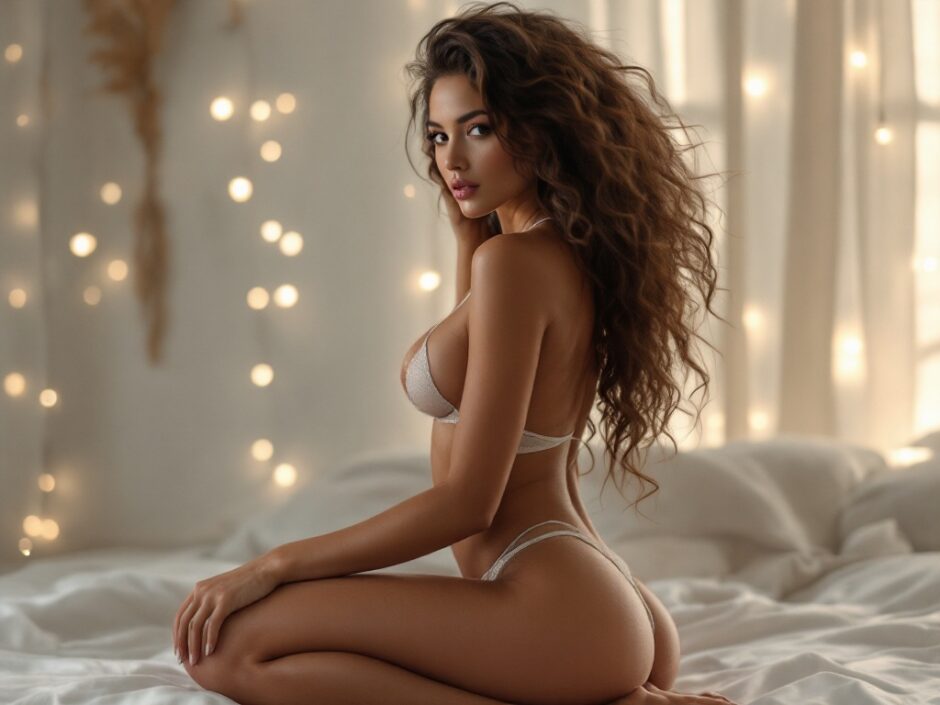Across the ages, erotic art has functioned as a reflective surface for societal norms, individual fantasies, and the intricate psychology surrounding desire. This genre spans a diverse array of interpretations and mediums, from timeless masterpieces to contemporary digital innovations. In today’s world, the emergence of artificial intelligence within the artistic sphere has opened exciting pathways for both the creation and appreciation of erotic art. With algorithms adept at processing large volumes of data and producing original works, the role of AI gains a distinct layer of complexity. This convergence of technology and creativity prompts profound questions regarding our perceptions, the essence of authenticity, and the nature of emotional engagement. Grasping how AI impacts human views on erotic art is essential for delving into the deeper psychological layers at play.
The Convergence of Psychology and Erotic Art
Erotic art profoundly influences human emotions, frequently stirring feelings of longing, intrigue, and exhilaration. Personal experiences and cultural influences heavily shape this reaction, dictating how individuals understand various artistic representations. The psychology underlying these works penetrates the realm of fantasy—the most fundamental form of desire that often traverses societal limitations. Artistic depictions of fantasies create a secure environment for individuals to explore and articulate their inner emotions without fear of judgment. Moreover, the emotional reactions prompted by these pieces can lead to improved self-awareness and a clearer comprehension of one’s own desires. Consequently, erotic art functions not merely as entertainment but as a catalyst for psychological reflection.

Expressions of Desire
Across the ages, a variety of artistic forms have bravely examined desires, boldly challenging societal taboos. Traditional erotic art, often characterized by idealized portrayals, emphasizes the aesthetic appreciation of the human figure and intimacy through a romantic lens. In contrast, contemporary erotic art embraces a variety of styles, featuring unfiltered and abstract representations of sexuality. This transformation encourages observers to reassess their understanding of desire, challenging conventional ideas of allure and beauty. The rich diversity in representation allows for a more profound inquiry into the human psyche, as people navigate the realms of fantasy and reality. Notably, the contrast between classical and modern techniques raises vital questions about societal attitudes toward sexuality.
| Art Form | Features | Psychological Effects |
|---|---|---|
| Classical | Idealized representations, romantic charm | Admiration of beauty, reminiscence of traditional values |
| Modern | Varied styles, raw and abstract | Confrontation of societal taboos, exploration of identity |
The Function of AI in the Creation of Erotic Art
Artificial intelligence is becoming an integral part of the art-making process, offering innovative tools that assist artists in crafting erotic pieces. AI algorithms analyze historical artworks, identify patterns, and distill styles that can fuel new artistic endeavors. These advanced tools act as creative partners, not only enhancing the artistic workflow but also provoking thoughts on what originality means in art. The data-driven characteristics of AI foster a remarkable blend of styles, paving the way for unexpected fusions that may not arise within the realm of human artistry. As AI progresses, novel forms of erotic art emerge that blend human ingenuity with machine learning. This progression ignites fascinating discussions on the crossroads of technology, sexuality, and artistic creativity.
AI’s Reflection of Human Experience
The connection between AI and human creativity is captivating, especially concerning its implications within the narrative of art. Although artwork produced by AI can simulate human styles, it currently lacks the emotional resonance that individuals infuse into their creations. This limitation raises crucial concerns about authenticity in art. How can a piece generated by a machine evoke the same depth of emotion as one crafted by human hands? Additionally, as AI observes human preferences and prevailing trends, it inadvertently mirrors collective facets of the human psyche. This dynamic challenges our comprehension of creativity while offering a unique perspective to examine our desires and experiences.

Shifting Perceptions: Human Creations vs. AI Artworks
With the rising prevalence of AI-generated erotic pieces, it becomes increasingly vital to contrast emotional responses to these artworks versus those created by traditional human artists. Initial reactions often uncover clear differences; while some viewers appreciate AI art for its inventive attributes, others sense a disconnect. Authenticity significantly influences these reactions, as many art aficionados contend that genuine emotional depth can only be achieved via human experience. Beyond authenticity, the novelty inherent in AI’s creations may spark curiosity, prompting observers to reflect on the essence of desire in an era dominated by technology. The influence of technology on artistic perceptions might redefine how we connect with eroticism across its many forms.
The Horizon of Erotic Art and Human Perception
The future direction of erotic art, intricately linked with AI, is set to reveal groundbreaking dimensions of desire and fantasy. As artists leverage AI’s capabilities, we may witness an increased willingness to experiment with aesthetics and emotional expressions. This could lead to uncharted realms, pushing boundaries and challenging societal norms as never seen before. However, as we welcome this promise of innovation, we must also consider the ethical dimensions surrounding AI and the portrayal of sexuality. Striking a balance between the excitement of new artistic frontiers and responsible practices is crucial for nurturing a secure environment for creative exploration. Thus, the future of erotic art resides in collaboration—bridging the gap between humans and machines, tradition and modernity, psychology and expression.
Conclusion
The investigation of the psychology of erotic art in light of AI’s influence reveals a complex interaction between technology and human experience. Serving as both a reflection of personal desires and a medium for artistic expression, erotic art wields considerable power in shaping our understanding of self and society. The insights gathered from analyzing emotional reactions, authenticity, and AI’s role present a richer narrative that outlines the evolution of erotic expression. Ultimately, the integration of AI into this domain provokes essential conversations about the future of creativity, presenting both challenges and opportunities. As we journey through this uncharted landscape, it is vital to stay aware of the psychological impacts that art has on us and the ethical responsibilities that accompany advancements in technology.
Frequently Asked Questions
- What constitutes erotic art? Erotic art is a category that delves into themes of sexuality, intimacy, and desire, often aiming to evoke emotional or sensual responses from its audience.
- In what ways does AI shape the creation of erotic art? AI influences erotic art by employing algorithms to study existing styles, trends, and themes, generating innovative interpretations and expressions of eroticism.
- Is AI-generated art considered less valuable compared to art made by humans? The value of art, whether produced by AI or a human artist, is subjective and can depend on the emotional connection, originality, and personal interpretation of the observer.
- What are the psychological effects of erotic art on viewers? Erotic art can elicit a spectrum of psychological responses such as arousal, curiosity, and introspection, varying greatly depending on individual experiences and cultural contexts.
- Can AI comprehend human emotions in art? While AI can identify patterns and reactions to artistic works, it lacks the genuine emotional insight that humans possess, which significantly influences the depth of the art it produces.



